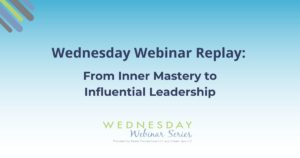Crafting a standout resume can feel like an unobtainable art form, but it doesn’t have to. Like you, your resume is unique, and it’s often your first introduction to potential employers. As a snapshot of your professional story, your resume is an important tool in landing your next prominent role. At Talent Connections, we’ve interfaced with thousands of candidates over 25 years, and we understand what it takes to capture the attention of hiring managers and recruiters. In this article, Susan Kent, Vice President and Resume Writing Expert, lays out her top five tips to help you stand out in your next interview, regardless of seniority.
1.) Make It Visually Appealing
First impressions matter. Your resume’s appearance is the first thing a recruiter or supervisor will notice. Most people spend 15 seconds or less scanning a resume before deciding between reading further or moving it to the delete folder or pile. Your resume must be easy to read, organized, and professional to make the most of this short window. Here are a few tips:
Use clear section headers: Bold and slightly larger fonts can help direct attention to critical areas like “Professional Experience,” “Skills,” and “Education.”
Choose a clean format: Avoid excessive graphics or decorative fonts. Stick to professional fonts like Arial, Calibri, or Times New Roman (I personally like Aptos).
Include white space: A cluttered resume is overwhelming. Ensure enough spacing between sections to keep the document easy on the eyes.
A visually appealing resume makes it easier to scan and demonstrates your attention to detail and professionalism.
2.) Use a Chronological Format
Recruiters and hiring managers value clarity, and the industry standard is a chronological format—starting with your most recent role. This format helps recruiters quickly understand your career progression and experience level. Be careful not to omit any dates, as that can raise red flags and leave recruiters guessing about gaps or inconsistencies.
Be sure to highlight your most relevant experience. Keep your most recent and significant roles detailed while trimming down older or less relevant positions. Consistency in formatting is critical. For instance, if you’re listing dates in “MM/YYYY” format, stick to that throughout.
3.) Emphasize Key Accomplishments
Your resume should not just describe what you did but highlight what you have achieved! Your resume should reflect your value, and hiring managers want to SEE the value you bring through your previous roles. When writing these sections, keep in mind the following:
- Be results-focused: Replace vague job descriptions with quantifiable achievements. For example, instead of saying, “Managed a team,” say, “Led a team of 10 to achieve a 25% increase in sales within six months.”
- Keep it concise: Use bullet points to list accomplishments and limit each bullet to one or two lines. You don’t want to take up too much real estate.
- Tailor for relevance: Focus on accomplishments that align with the job you’re applying for. If you’re seeking a leadership role, emphasize examples of team management and strategic impact.
A robust list of accomplishments clearly shows your capabilities and sets you apart from the competition.
4.) Be Honest and Confident
Integrity matters (and it is one of our core values here at Talent Connections). Never lie or exaggerate on your resume. Misrepresentations can come back to haunt you, often during background checks or interviews. Make sure you stick to the facts. Honesty about your roles, achievements, and skills builds trust with potential employers. When highlighting your strengths, confidence is equally important. Don’t downplay your achievements—if you’ve earned recognition, showcase it! Use action verbs like “achieved,” “led,” “initiated,” or “implemented” to demonstrate your impact. Remember, being truthful and self-assured positions you as a credible and reliable candidate.
5.) Proof and Double-Proof
Avoiding typos or grammatical errors should seem like a given, but only some things disqualify a candidate faster. These mistakes signal a need for more attention to detail, which can be a dealbreaker. Spellcheck tools, like Grammarly, can help you avoid these pitfalls. Be warned -while helpful, they are not foolproof. Manually review your resume for errors that automated tools might miss. Reading your resume out loud can also help you catch awkward phrasing or missing words. Finally, ask for feedback. A fresh pair of eyes from a trusted friend or colleague can identify issues you may have overlooked. Investing time in meticulous proofreading shows professionalism and respect for the interviewer’s time.
Conclusion: Making Your Resume Sing
Your resume is more than a document—it’s a marketing tool highlighting your unique skills, accomplishments, and professional journey. Following these five tips, you can create a resume that grabs attention, tells your story effectively, and positions you as the ideal candidate for your next opportunity.
Need additional guidance? Our sister company, Career Spa, specializes in helping candidates like you navigate the job search process. Contact Career Spa for expert advice and resources to ensure your resume stands out.




